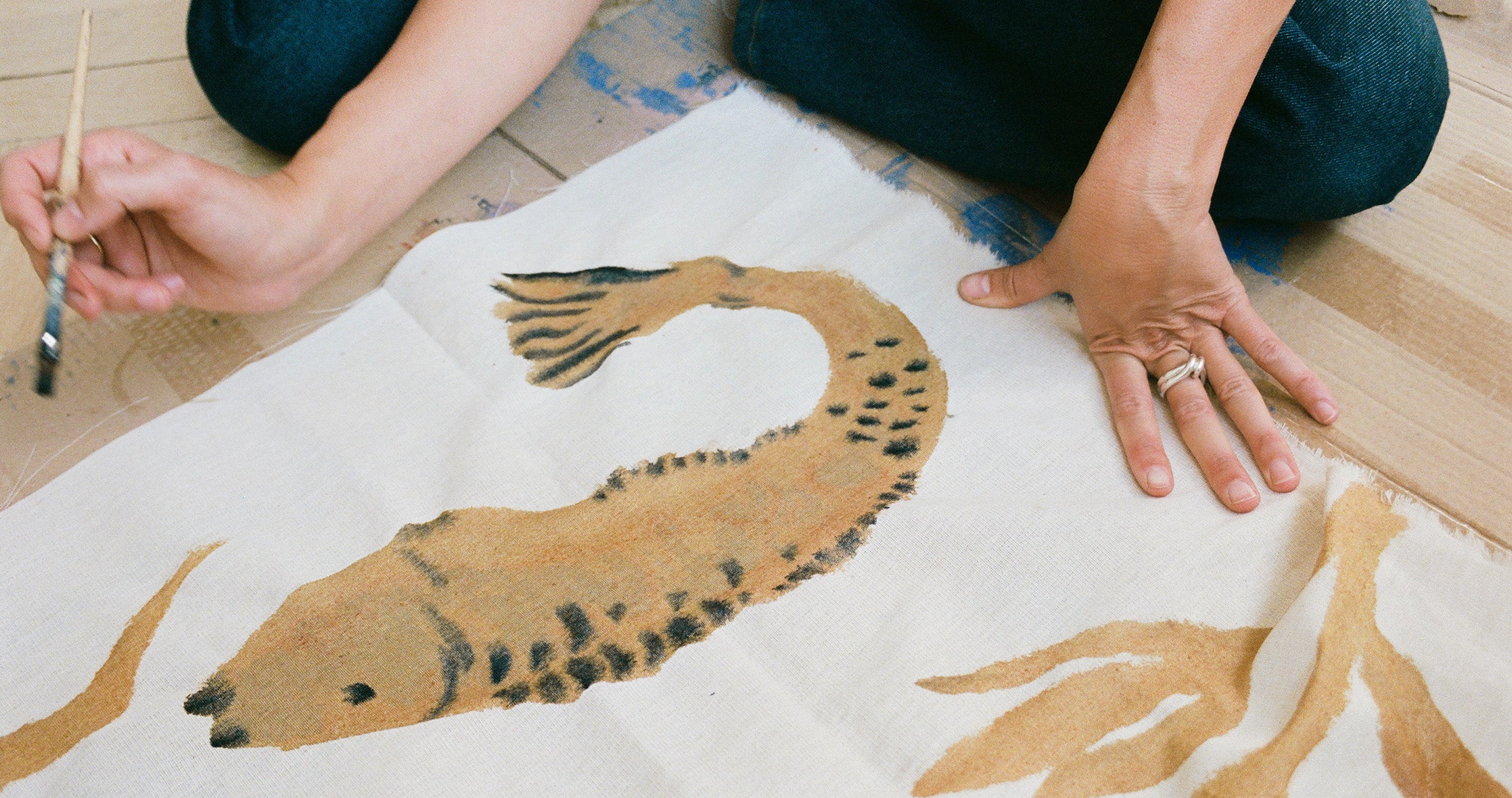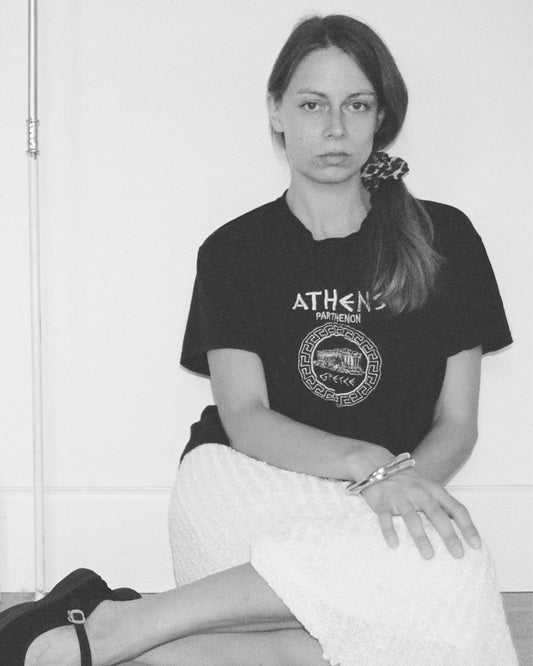

IN CONVERSATION WITH TERPSICHORE SAVVALA
We sat down with Greek artist Terpsichore Savvala to talk about her inspirations, her love for clay, and the stories that shape her practice. Through ceramics and paintings, she explores myth, memory, and protection - creating fragile yet enduring works that feel both ancient and alive today. Her exhibition Oscilla is on view in our Elmegade 5 store from September 19-27, 2025.
You work from both Athens and Copenhagen. How do you feel connected to these two cities, and is there a special reason why you ended up working from there?
Athens and Copenhagen, these two cities for me embody the two absolute extremes. They are both beautiful in their own way but in a completely opposite way. Athens and Copenhagen embody two extremes for me. They’re both beautiful, but in completely opposite ways.
I’m Athenian through and through - born and raised in the city center, where I also studied history and archaeology. I moved to Copenhagen because of my partner’s work and didn’t expect to love it as much as I do. Athens is overt, noisy, and expressive: everything, both the pretty and the unpleasant, is out in the open. Copenhagen is discreet. You need to come close before it reveals itself. It’s alive and vibrant in a quieter way - and when the sun shines, it transforms into the most glorious place you’ve ever seen.
WHERE DO YOU SEEK INSPIRATION FOR YOUR PRACTICE?
I look for meaning in old myths and symbols that have transcended generations, moving from prehistory to contemporary folklore. I’m fascinated by how centuries-old stories remain relevant, how their depictions endure almost unchanged, retaining their meaning today. For this exhibition, I followed the form of ancient Greek loom weights. Beyond their functional use, they were also votive objects, offered to female deities for protection. Archaeologists call them “oscilla,” meaning “little faces” - from which the word “oscillate” comes, like the weights swinging back and forth.
I decorated them with lush plants and benevolent animals and creatures, all protecting the tiny face at the centre. This could be my child, anyone’s child, or simply any person needing protection today - there are too many at the moment. They are small amulets to keep loved ones safe and ward off evil.
I have these oscilla hanging around paintings with similar meanings: protective, imaginary flowers and creatures with the sole purpose of keeping the little one safe. All of nature is there to caress them and make them feel loved.
How do you choose the colors you work with? And what is important to you in this process?
I don’t follow a strict process. I choose the colors I enjoy, the ones that spark a reaction. Some colors have this effect - they can feel soothing or uplifting - and I follow that instinct in my work.
Is there a special reason why you were drawn to working with clay?
Perhaps due to my studies, I’ve always seen clay as a universal material that connects generations. It is at once fragile and persistent. Clay gives us knowledge about humanity thousands of years ago, yet it can also shatter in a second in the hands of someone clumsy - often me.
The magic of the kiln is a part of all the ceramic works you create. Do you feel you have a special bond with your kiln, and do you have any rituals before giving it the final control over your works?
I have to be honest: I’m not the kiln’s best friend. I’m still a little afraid of it, because I never know what I’ll find when I open it after the final firing. I try to see the positive - that it teaches me to let go of expectations - but the truth is it often takes time to accept how different the result is from what I imagined.
What do you love most about the way you work? Does it make you feel connected to a specific subject or feeling?
When I work, I tend to forget about everything else, sometimes even to drink water. I get into the flow and it is kind of meditative. I think most people get that when they do something they like. Working with clay also includes many repetitive, “mindless” tasks - like cleaning tools or wedging clay - which help with getting in or out of the creative mode and clear my head.
Which artists are you particularly drawn to or inspired by?
When I first moved to Copenhagen in 2019, SMK had a temporary exhibition on Sonja Ferlov Mancoba. I just went to see the museum; I had no idea I would discover one of my favourite artists. I love her warmth and sensibility, the ways she uses symbols but makes them personal and emotional. At Assistens Kirkegård, her sculpture 'Fulg med unge' stands by her grave, and it moves me every time I pass by.
In terms of Greek artists, I like folklore art made by autodidact painters. A great example is Theofilos (1870–1934). His work is a kind of art naïf with vibrant colours depicting daily life. Not influenced by the trends of his era, you can tell he was painting in the only way he knew how. I love this sincerity.
There are many different shapes present in your ceramic works. Which design or shape by Trine Tuxen do you feel most drawn to?
I never take off my Era Ring, even when I work with clay. Its shape feels both precious - the knot on top stands out like a gemstone - and sturdy, like two parallel coils wrapping around each other in a constant hug on my finger.
Explore Terpsichore Savvala's univers on Instagram











